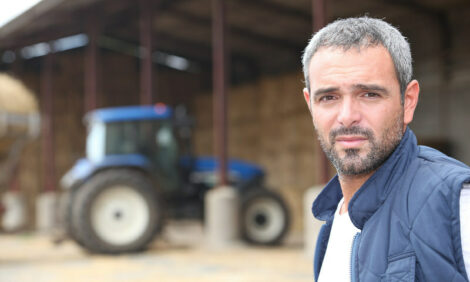



The Science Behind Meat Quality
UK - An interview with Caroline Mitchell, meat scientist with JSR Genetics, which includes details of a trial she has recently conducted for one of the company's customers.Q: Give a brief summary of you and your role.
I am 24 years old and a Meat Scientist with JSR. I have been working with JSR for three years. I have always had a keen interest in the application of science-based research to improve meat quality. Meat quality is intrinsically linked with animal welfare and, as a result, I gained a qualification as an animal welfare officer.
My role includes running several sire line trials within JSR. This consists of monitoring on farm production data and going into the abattoir where I take meat samples to determine meat quality. I undertake specific trials work for JSR customers as part of the comprehensive technical support package we offer with our genetics.

Q: What are your qualifications?
I have a degree in Applied Biology following three years at Nottingham University. Alongside my full-time job, I am currently doing a Masters in Meat Science at Bristol University, in conjunction with JSR. This involves completing a comprehensive study into the meat quality attributes of four JSR sire lines at Harper Adams College.
Are consumers more aware of meat quality?
I think the supermarkets are more aware of the importance of good meat eating quality and that they need to have an angle above and beyond their competitors. They are very willing to explore new systems and technologies to improve the quality of, in particular, their premium product ranges. There is certainly an increased awareness and greater demand for better quality pork cuts, despite the financial downturn.
Q: How is welfare and meat quality related? Can you give a practical example?
JSR have just finished a trial with one of our customers, Blythburgh Free Range Country Pork. Blythburgh market their product as being from a high welfare production system, resulting in premium quality pork. They approached JSR to undertake specific scientific trials to reinforce and verify the claim. This research gave me the opportunity to use my skills as a meat scientist and an animal welfare officer.
By monitoring the pH of an animal post slaughter, it is possible to look at the frequency of both PSE (Pales, Soft, Exudative) and DFD (Dark, Firm, Dry) meat which are indicators of stress levels, which in turn are influenced by animal welfare factors.
PSE meat is indicative of an animal that has undergone acute stress pre-slaughter. The stress factor can have lasted for anywhere between a few minutes to an hour prior to the animal's slaughter. DFD meat is indicative of an animal that has suffered from chronic stress. The duration of chronic stress is measured in hours, days and months.
Alongside the pH monitoring that occurred in the abattoir, I carried out a welfare assessment, which included reviewing the production system on farm, observing the animals at point of loading, during the transportation and as they are moved into the abattoir. This assessment allowed me to identify any potential causes of DFD and PSE meat.
In the resulting pH measurements, taken at 45 minutes and 24 hours post slaughter, I found low levels of PSE-stress (5.4 per cent) caused after the pigs left the farm – more than likely through haulage – and no DFD. This provided strong evidence that the pigs were part of a high welfare production system.
You can produce the best animal in the most effective production system but if it then suffers acute stress in the abattoir, all the previous good work is undone and lost. I work with various companies throughout the supply chain to ensure they understand the economic implications of such mistakes and the practical steps they can take to mitigate them.
Q: What do you enjoy about your job?
The potential for meat quality is dependent upon the genetics you choose in the first place. Genetics are always the starting point followed by nutrition, production systems, slaughter and of course how the animal is treated throughout. Getting all of those factors right can be very satisfying and, from a producer's perspective, financially rewarding.
I enjoy the variability of my job with its mix of lab, research and practical on-farm work. As producers, we must ensure we do not work in isolation but in partnership across the pork supply chain to ensure that the final consumer experience is the best it can be.








